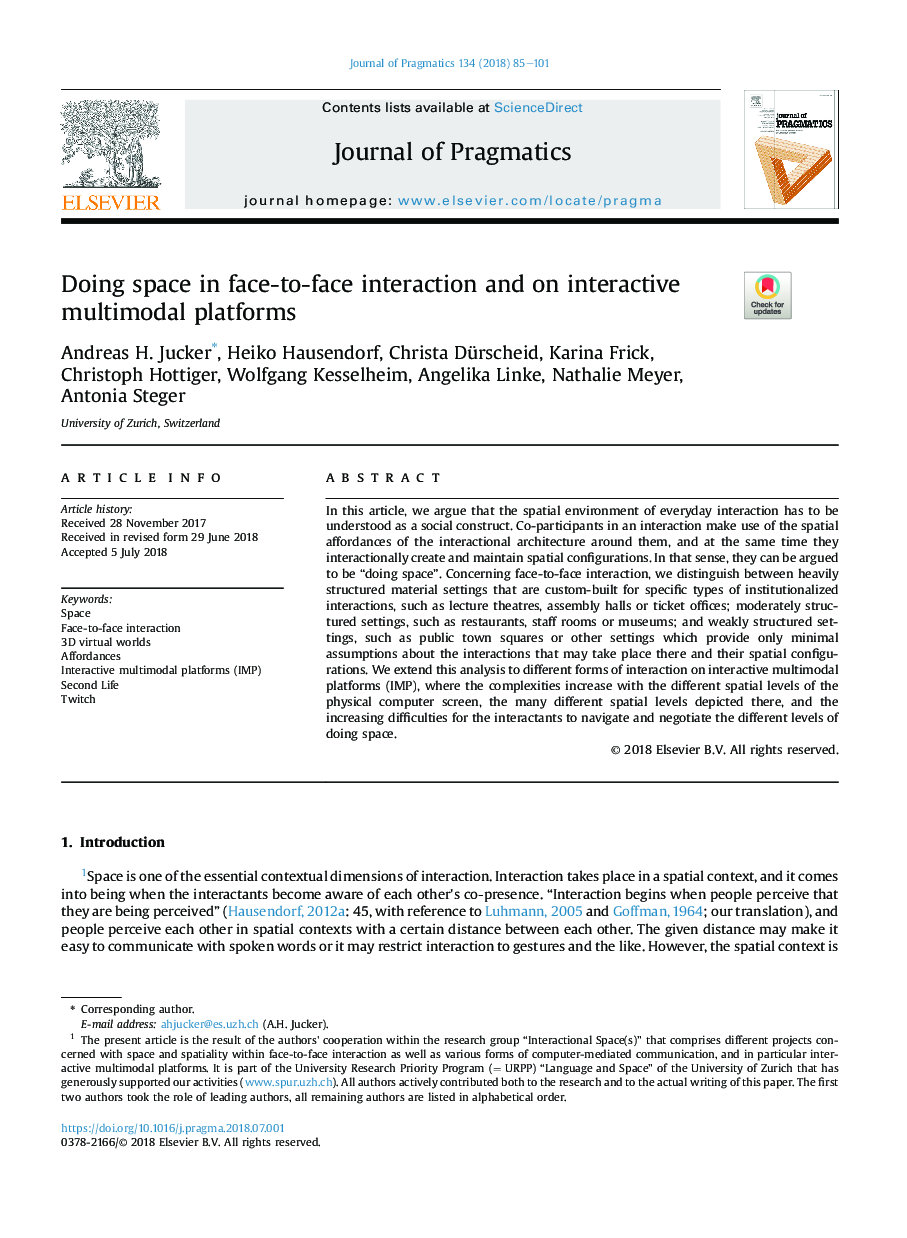| Article ID | Journal | Published Year | Pages | File Type |
|---|---|---|---|---|
| 7297140 | Journal of Pragmatics | 2018 | 17 Pages |
Abstract
In this article, we argue that the spatial environment of everyday interaction has to be understood as a social construct. Co-participants in an interaction make use of the spatial affordances of the interactional architecture around them, and at the same time they interactionally create and maintain spatial configurations. In that sense, they can be argued to be “doing space”. Concerning face-to-face interaction, we distinguish between heavily structured material settings that are custom-built for specific types of institutionalized interactions, such as lecture theatres, assembly halls or ticket offices; moderately structured settings, such as restaurants, staff rooms or museums; and weakly structured settings, such as public town squares or other settings which provide only minimal assumptions about the interactions that may take place there and their spatial configurations. We extend this analysis to different forms of interaction on interactive multimodal platforms (IMP), where the complexities increase with the different spatial levels of the physical computer screen, the many different spatial levels depicted there, and the increasing difficulties for the interactants to navigate and negotiate the different levels of doing space.
Related Topics
Social Sciences and Humanities
Arts and Humanities
Language and Linguistics
Authors
Andreas H. Jucker, Heiko Hausendorf, Christa Dürscheid, Karina Frick, Christoph Hottiger, Wolfgang Kesselheim, Angelika Linke, Nathalie Meyer, Antonia Steger,
